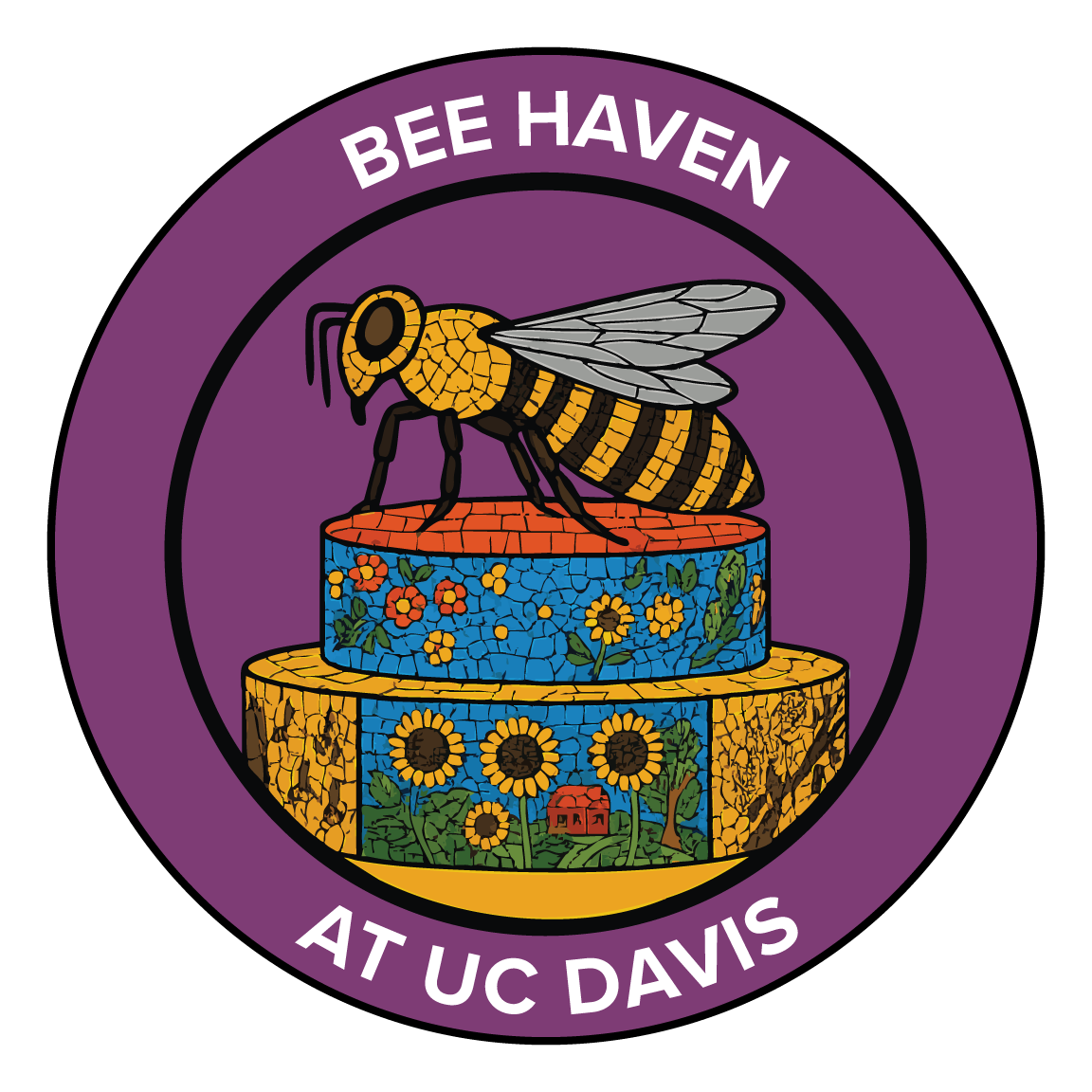The UCD Bee Haven is a half-acre garden that serves as a hub for education, research, and inspiration, and helping individuals create pollinator-friendly spaces. Whether you have a small backyard, a balcony garden, or a larger landscape, you can cultivate a thriving habitat for bees and other pollinators. The garden is here to guide and inspire your journey, providing the knowledge and resources to plan your own pollinator oasis.
Foundations of a Bee-Friendly Garden
A successful pollinator garden provides:
- Food: A diverse selection of nectar and pollen-rich plants to support bees year-round.
- Good choices include the mint, sunflower, rose, buckthorn, figwort, and plantain families.
- Bees vary in size, flower color preference, and feeding styles. Accommodate this with flowers of varying shapes, sizes, and colors.
- Place several of the same plant together, rather than spreading them around the garden.
- Water: A water source, such as a shallow dish or birdbath with pebbles, to keep bees hydrated.
- Shelter: Nesting sites for native bees. These include: Undisturbed soil • Hollow stems • Bee houses • Bare soil • Pavers set in sand • Rock crevices • Stumps and logs above ground • Grasses • Redwood fence posts • Plant material • Resin for propolis.
- Pesticide-conscious environments to support pollinator health.
Why Garden for Bees?
Bees pollinate many of the foods we eat including fruits, nuts, and vegetables that make our diets tasty and nutritious. Bees also pollinate many of the wild plants that in turn provide food and habitat for other wildlife. Many bee species are in decline. One thing is clear: bees need flowers and flowers need bees. We can all plant bee gardens, from a few flower pots to several acres.
Design and Implementation Resources
- Garden Plant List: Here is the full list of plants at the bee garden
- California Master Beekeeper Program: Learn about how to keep honey bee hives or simply bee-friendly
- Informational Panels and Flyers. Sample signs and content for nurseries and garden centers:
Recent News on the Bee Haven
- Bee Haven Renovations June 20th, 2025
